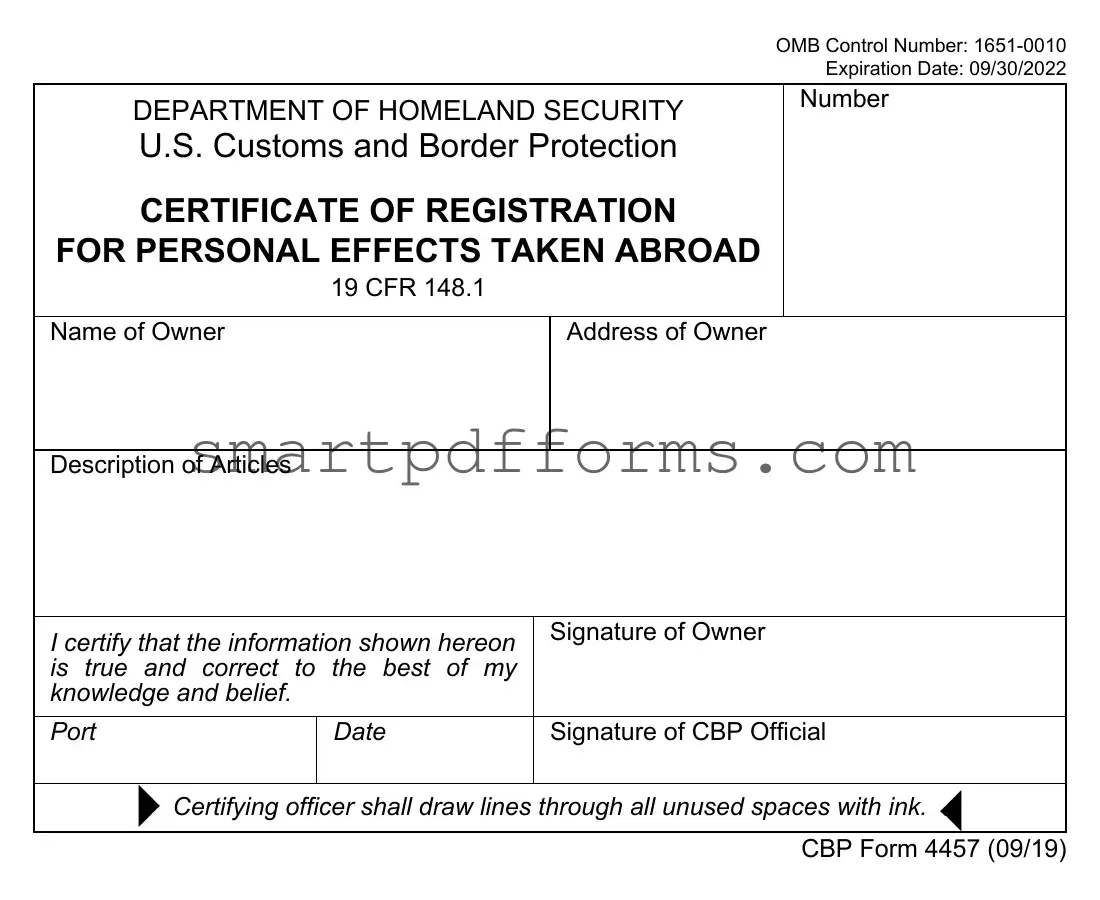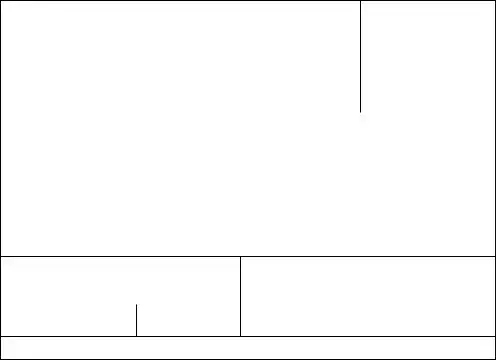OMB Control Number: 1651-0010
Expiration Date: 09/30/2022
DEPARTMENT OF HOMELAND SECURITY |
Number |
|
U.S. Customs and Border Protection
CERTIFICATE OF REGISTRATION
FOR PERSONAL EFFECTS TAKEN ABROAD
19 CFR 148.1
Name of Owner |
Address of Owner |
|
|
Description of Articles
I certify that the information shown hereon |
Signature of Owner |
is true and correct to the best of my |
|
knowledge and belief. |
|
|
|
|
|
Port |
Date |
Signature of CBP Official |
 Certifying officer shall draw lines through all unused spaces with ink.
Certifying officer shall draw lines through all unused spaces with ink. 
CBP Form 4457 (09/19)
Paperwork Reduction Act Notice: The Paperwork Reduction Act requires that we advise you of the purpose of this form and how the information will be used. The form is provided for your use, strictly at your option, in lieu of or in addition to bills of sale, appraisals, and/ or repair receipts to show the CBP officer proof of prior possession of the article(s) in the U.S. The completion of this form by you is strictly voluntary. U.S. Customs and Border Protection does not maintain copies of the completed forms.
Statement Required by 5 CFR 1320.21: The estimated average burden associated with this collection of information is 3 minutes per respondent or record keeper depending on individual circumstances. Comments concerning the accuracy of this burden estimate and suggestions for reducing this burden should be directed to the U.S. Customs and Border Protection, Information Services Branch, Washington, DC 20229, and to the Office of Management and Budget, Paperwork Reduction Project (1651-0010), Washington, DC 20503.
INSTRUCTIONS
1.Complete the Original only.
2.Prior to Departure, present the described articles and the completed form to a CBP Officer for comparison and signing of the form.
3.The signed form is to be returned to the applicant and must be shown to CBP each time the registered article(s) are returned.
4.This certificate is not transferable.
5.Note: Foreign repairs or alterations to articles (whether or not the articles are registered with CBP) are dutiable. Such repairs or alterations must be declared to Customs when the articles reenter the United States, whether or not they were done free of charge.
CBP Form 4457 (09/19)


 Certifying officer shall draw lines through all unused spaces with ink.
Certifying officer shall draw lines through all unused spaces with ink. 
